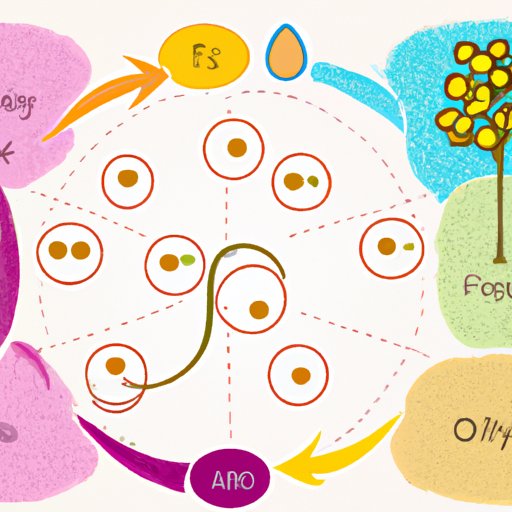Introduction
Fertility cycles refer to the physical changes a woman’s body undergoes during her menstrual cycle. The length of a fertility cycle can vary from woman to woman, but it typically lasts between 21 and 35 days. In this article, we will explore what are the most fertile days of your cycle and how you can maximize your chances of conception.
Exploring the Most Fertile Days
Your fertility cycle is regulated by two hormones: estrogen and progesterone. Estrogen levels rise at the beginning of your cycle, peaking mid-cycle and then slowly declining. Progesterone levels begin to rise after ovulation, and if fertilization does not occur, they will drop again at the end of your cycle.
Charting your cycle
To determine your most fertile days, you will need to chart your cycle. This involves tracking your temperature and cervical mucus every day for several months. Your basal body temperature (BBT) is the lowest temperature your body reaches in a 24-hour period and is measured first thing in the morning with a thermometer. Cervical mucus is produced by your cervix and changes throughout your cycle. It will be thick and sticky at the beginning of your cycle and thin and stretchy when you are most fertile.
Understanding hormone levels
By charting your cycle, you can identify when your hormone levels are changing. When your estrogen levels are high, it indicates that you are close to ovulating. When your progesterone levels start to rise, it means that you have already ovulated and your most fertile days are behind you. Your most fertile days are usually the three days leading up to and including the day of ovulation.

Maximizing Chances of Conception During Most Fertile Days
Once you have identified your most fertile days, there are some steps you can take to maximize your chances of conceiving. According to Dr. Kecia Gaither, an OB/GYN and double board-certified doctor in maternal fetal medicine, “If couples are trying to get pregnant, having intercourse every other day or every day around the time of ovulation is recommended to increase their chances of getting pregnant.”
Tips to maximize chances of conception
- Track your cycle and identify your most fertile days
- Have intercourse every other day or every day around the time of ovulation
- Use an ovulation test to confirm ovulation
- Avoid lubricants as they can reduce sperm motility
- Take prenatal vitamins with folic acid before trying to conceive
Conclusion
Your fertility cycle is regulated by two hormones: estrogen and progesterone. By charting your cycle and understanding your hormone levels, you can identify your most fertile days. To maximize your chances of conceiving, have intercourse every other day or every day around the time of ovulation. Additionally, take prenatal vitamins with folic acid before trying to conceive.
In conclusion, understanding your fertility cycle is key to maximizing your chances of conceiving. Knowing which days are the most fertile days of your cycle can help you plan accordingly and increase your chances of success.
(Note: Is this article not meeting your expectations? Do you have knowledge or insights to share? Unlock new opportunities and expand your reach by joining our authors team. Click Registration to join us and share your expertise with our readers.)
